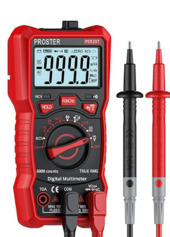Armonius
New Member
Hello people of diysolar. I have been lurking on here for some weeks now. And a circumstance has occurred that gave me a reason to create an account!
I set up solar on my school bus from last year December. And it's been working fine up until May. It's slowly started taking longer and longer to charge my batteries.
At first I thought it was a bad crimp on the terminal connection that connects the positive side to my charge controller.
Before I dive into my troubleshooting tactics, let me list my setup
4 425watt solar panels wired in parallel
2 12v 200ah Litime/Ampere Time lifepo4 batteries wired in parallel
1 2500watt inverter
1 bateria Sunrock 80A MPPT charge controller or Growatt SC48120 MPPT charge controller
When I look at my MPPT, the watts coming from PV is 11. Max I have seen it go to is 50. Something is awfully wrong here. I know it's the amperage because I'm getting good voltage. (170-190 depending on the day) And the PV voltage often stays at 0-2 on the charge controller. I've measured the voltage and amperage for each solar panel and I've gotten good voltage (all read 170-190) and amps are reading 1 for each of them. I thought it was the y branch connectors that were bad, so I replaced them today and nothing changed. What else can I try? The batteries are at 12.8-12.9 for the past two days with barely any power going into them
I set up solar on my school bus from last year December. And it's been working fine up until May. It's slowly started taking longer and longer to charge my batteries.
At first I thought it was a bad crimp on the terminal connection that connects the positive side to my charge controller.
Before I dive into my troubleshooting tactics, let me list my setup
4 425watt solar panels wired in parallel
2 12v 200ah Litime/Ampere Time lifepo4 batteries wired in parallel
1 2500watt inverter
1 bateria Sunrock 80A MPPT charge controller or Growatt SC48120 MPPT charge controller
When I look at my MPPT, the watts coming from PV is 11. Max I have seen it go to is 50. Something is awfully wrong here. I know it's the amperage because I'm getting good voltage. (170-190 depending on the day) And the PV voltage often stays at 0-2 on the charge controller. I've measured the voltage and amperage for each solar panel and I've gotten good voltage (all read 170-190) and amps are reading 1 for each of them. I thought it was the y branch connectors that were bad, so I replaced them today and nothing changed. What else can I try? The batteries are at 12.8-12.9 for the past two days with barely any power going into them




